Designing with minimal waste is a sustainable practice that has gained momentum in the past few years. However, in my opinion, it tends to lead one into ethnic-styled patterns that are very geometric in shape such as a kimono, blog coat, or other. Recently I made a top, and although most ideas of the style were simple shapes, there were still voids in the neckline and shoulder slope areas.
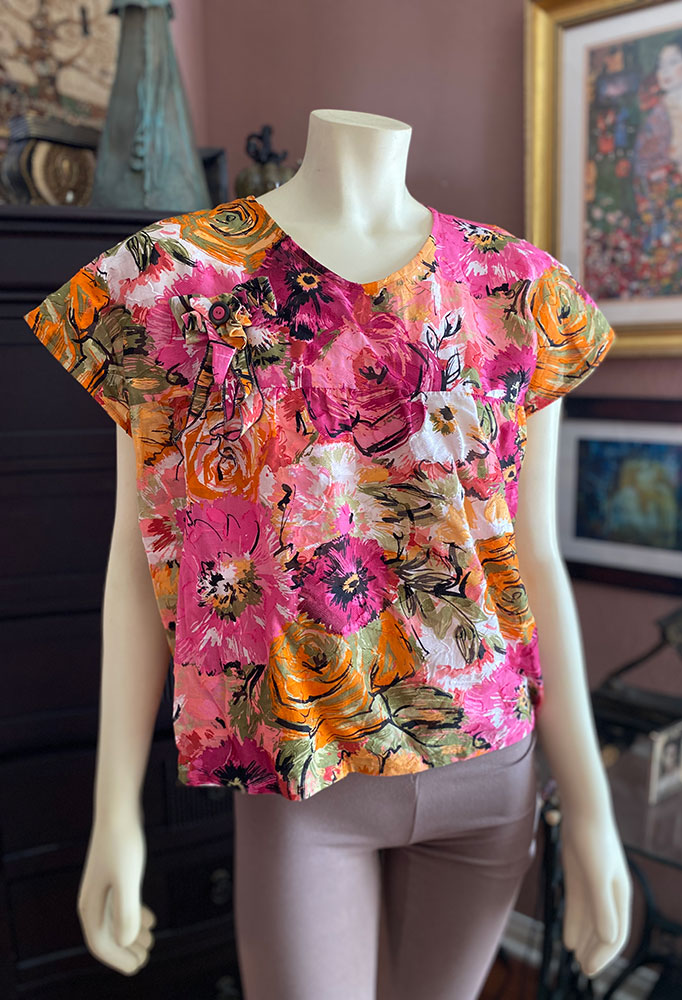
So, my challenge and approach to Zero Waste was two-fold;
1. Design with relatively simple shapes, but with a bit of style
2. Use of the fabric from the void areas.
Here was my inspiration garment found on Pinterest. I thought the wide yoke and gathered panel below would be quite efficient on fabric use.
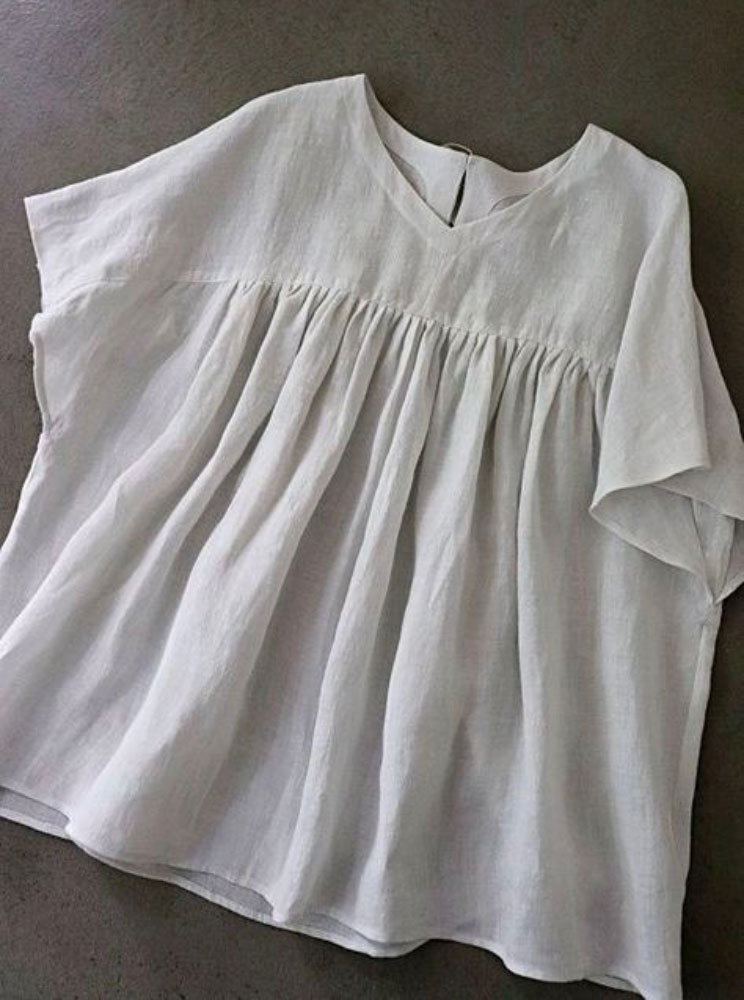
Fabric Choice
I chose a fabric that I had purchased overseas and loved the print. It is a voile-type fabric, but it has a burn-out effect that results in areas of the fabric being more see-through. It was not necessarily the best choice to show off the yoke and gather details, but it was a smaller piece of fabric, and I had enough. Since it was somewhat see-through, I knew that the gathered panel, sewn on to the yoke would be a good way to camouflage the bra worn underneath the top.
Creating the Pattern
Using Garment Designer pattern software (www.cochenille.com) I created the pattern below, keeping in mind the width of the fabric and the minimal yardage I had.
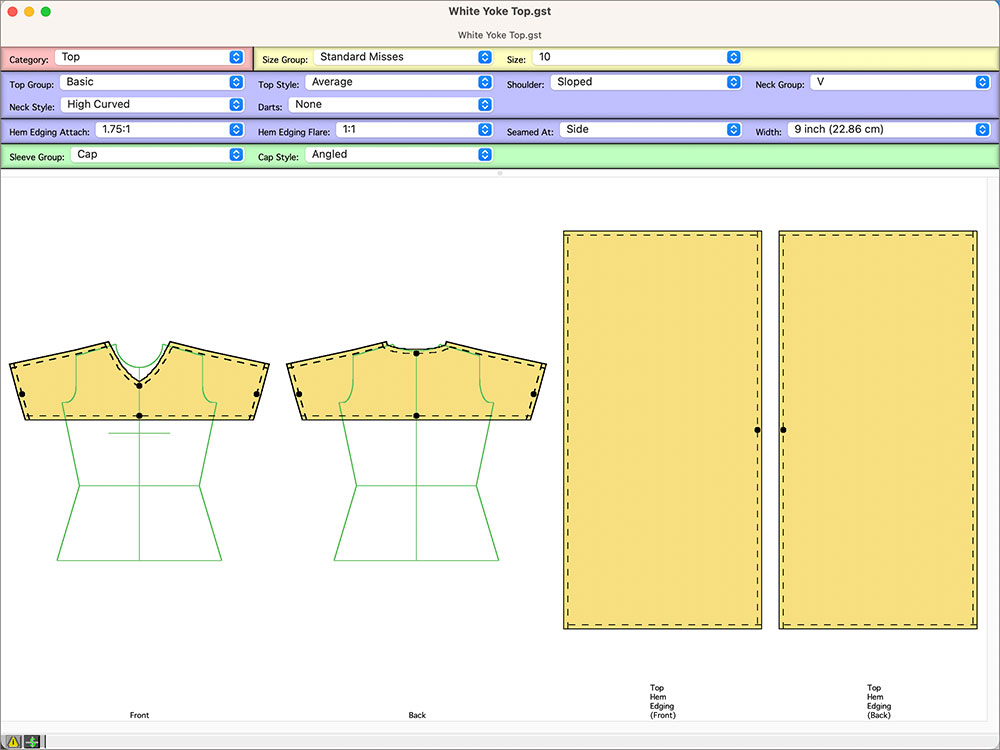
Garment Designer allows you to create a pattern layout to see how much fabric you might need. Below you can see about how much waste there would be.
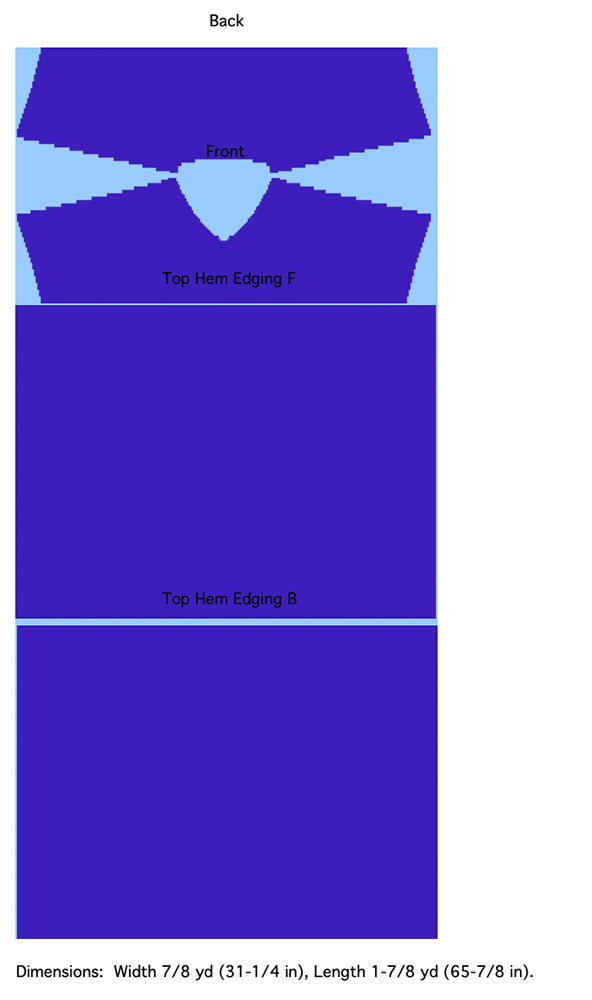
Constructing the Garment and Using the Waste
I constructed the garment, and then challenged myself to use up the waste in a creative way.
So, I decided to make a little brooch to wear with the top. Again, the busy print won’t allow one to see it readily, but I like hidden details that one notices when they are close-up/
I used my serger and a narrow-hem to finish several long triangular piece, and I left tails just for the fun of it. I created a bow using two rectangular pieces of cloth, one for the bow and one for the strip that the bow passed through. Finally, I checked out my button stash and found two buttons that could be sewn on top, to add a little more detail to the piece.
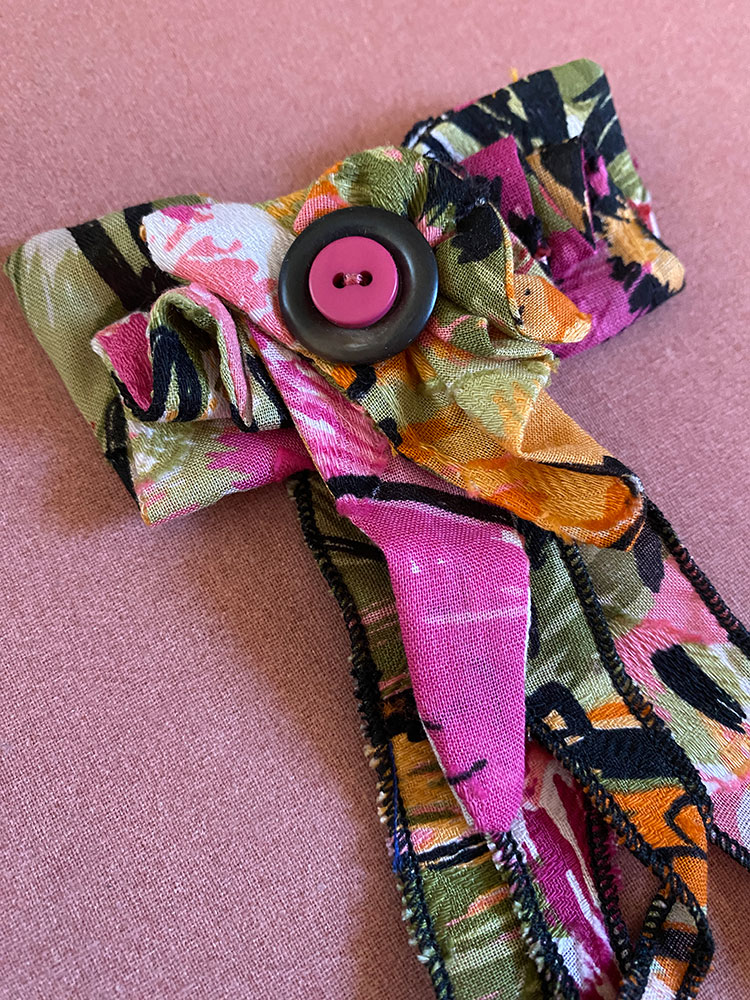
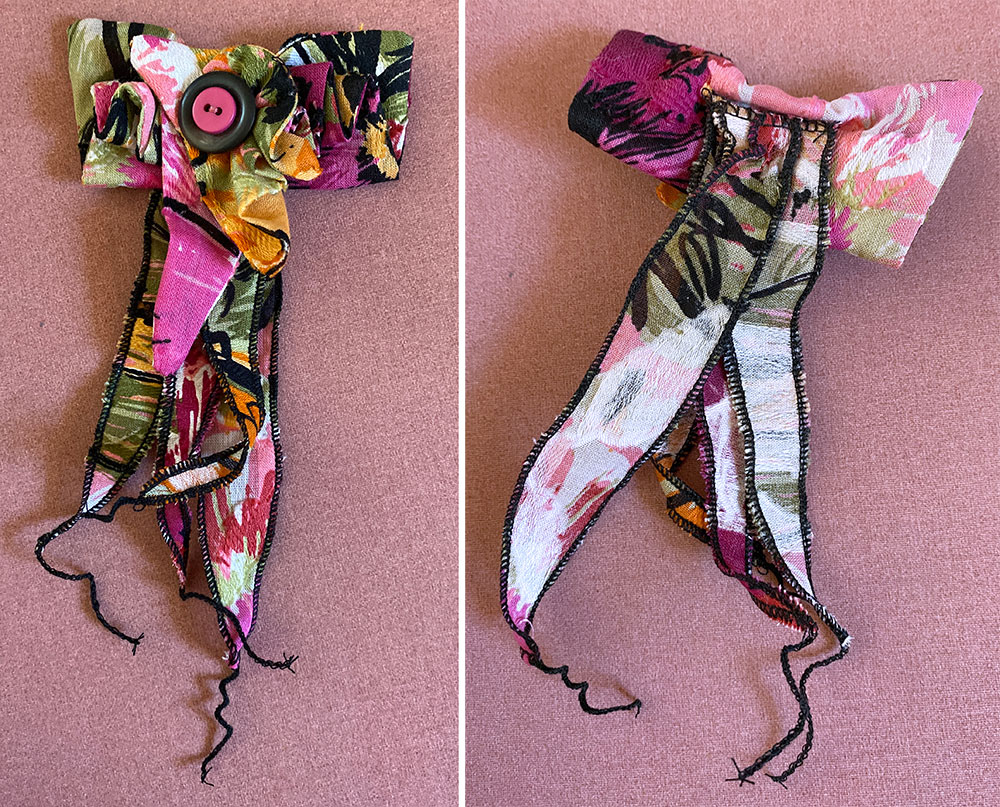
So, the next time you plan a garment.. think ahead a bit about how to be more efficient in the patternmaking but also how to use the left-overs in some creative way.
Susan..